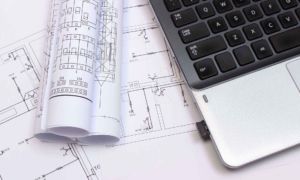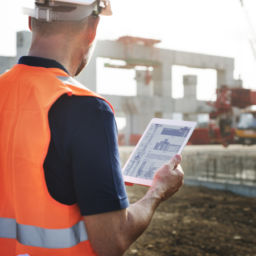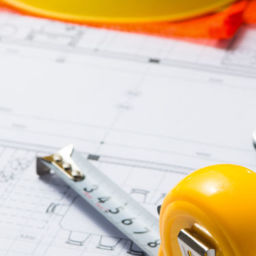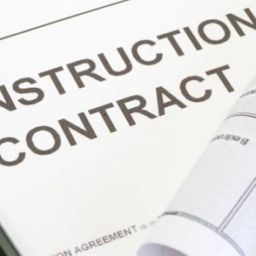Steps For Estimating
In this blog, we will go over the first five basic yet highly effective steps that could make your estimating process more efficient and hopefully a little more organised and less stressful!

Most of us have tried to produce accurate estimates to win work. You might have sent in tenders just to find out later that there was a mistake on the proposal. Or sometimes we forget to add or exclude elements from the quote.
So, no matter what mistakes you’ve made in the past, these simple steps will help you streamline your M+E estimation or insulation estimation process. It will help you know how to avoid making the same mistakes again.
Steps For Estimating: Step 1- Labour Units
Ideally, you would do it as you go through the estimating process. However, just before you submit the bid, check all of your labour units individually, not just the total. Decent estimating software will include these whilst breaking down the labour units from your takeoffs.
Always make sure you’re not way over or way under on the labour units. Double-check each line item carefully.
Whilst over analysis can lead to paralysis, looking back over your work with fresh eyes the next day or getting a colleague to do so before submitting or in stages throughout the estimate is never a bad idea.
If you have a fast install team, you might be able to shave some time off to lower your bid number, but always check this on the day you return the job. Check it to ensure that all of your labour units make sense.
Step 2- Subcontractor Quotes:
Make a list of all your subcontractors on your spreadsheet as line items and name / categorise them accordingly. Input their prices against the subcontractors’ names. You won’t use all of their prices but you should make sure they’re all listed so you know whether you got their quotes or not.
Ensure you have the quotes from all the subcontractors. That way you can compare, decide and include a subcontractor who would work well for your project based on previous experience ideally.
If you have a quote from a subbie whom you have never worked with before but theirs is the most competitive quote, be sure to do your due diligence on them including asking for references whom you can follow up on. Check if they have a presence on the web. More importantly ask them to clarify their scope of work, ideally sending them a template checklist and insist they go through it ticking off what they have and haven’t allowed for.
This forces them to acknowledge in writing that they have allowed for everything which you require them to, allowing you to compare apples for apples with other subbies.
Step 3- Material Price Check
The same goes for your quoted materials. List them out as per the supplier, with a different supplier per tab on the spreadsheet. Input the prices you receive against the supplier.
In the same way as the subcontractor quotes, you will know if you have received the quotation from everyone or not. You can then review your spreadsheet one last time before submitting your M+E estimate.
It is a very straightforward operation if you’ve broken them down by source and you should be able to copy and paste most of the information straight onto a spreadsheet.
If you have not listed the quoted materials as per the supplier, then you may not have all the information at a glance. There is a good chance that you might not have received the quote from one supplier when you thought you did. If you do not have all the quotes you need to make a sound M+E estimation, you can always call up the supplier and ask them to send the quote over.
However, if you go ahead, without all the quotes, you will not be able to compare the prices of each supplier. It will affect your M+E estimation.
If you submit the bid without all the information, you can either change your proposal after it has been submitted or you can leave it alone and see how it turns out. Either way, you will look unprofessional. The professional way is to avoid making any revisions to your proposal after you have submitted it.
Steps For Estimating: Step 4- Final Adjustments To Your Overhead and Profits
You should always check your overhead and profit before you submit your final M+E estimation.
Most companies build this into their markup % but this is an entirely separate article in itself which I’ll delve into another day.
Regardless of how you do it, make sure you look at your overhead and profit on the spreadsheet or software before you submit the M+E estimating bid. Ensure that your overheads and profits are where you want them to be. Double-check everything and ensure that it makes sense.
Steps For Estimating , Step 5- Final Check of all Includes and Excludes of the Project.
Your includes and excludes might have been recorded in a spreadsheet, specification schedule or scope of works document. Open and read every single include and exclude. Don’t just skim over it. Ensure that you haven’t missed anything.
By the way, all of these steps are good advice for all trades, not just mechanical estimating, electrical estimating and insulation estimating.
We have discussed the first five simple steps to make your bidding process almost stress-free. We will discuss the next five in my next blog. If you need estimating software to estimate projects on your own, contact us here because we have special discounted prices with a prominent estimating software provider in the UK.
Here at Chase Estimating, our bread and butter is Mechanical, electrical and insulation estimating. We would be more than happy to help you with your estimating requirements, in whatever capacity that may be. We use the powerful Ensign estimating software package to make sure your bid is accurate and has up to date material costs and labour times.
Our team of experienced estimators will process and analyse your project in detail to give you a sound M+E estimate and insulation estimate.
Get in touch with us today or visit our website at www.chaseestimating.com. Email us at enquiries@chaseestimating.com or call us on 01630417161. We will promptly get back to you.
















